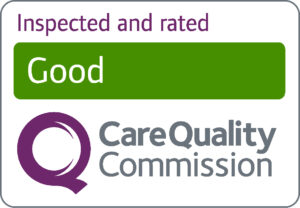To contact us for appointment queries please call 01274 274274.
Chronic pain effecting the abdomen or pelvis can arise from a great number of sources. These include any one of the organs of the digestive system, urinary system or reproductive system, as well as the muscles of the abdomen and pelvic floor and the bones and nerves of the back.
Diagnosing a potential cause for the pain is complex and will require input from a patient’s GP and quite often other specialists (gastroenterologists, general surgeons, gynaecologists, urologists).
It is important that prior to seeking our help, all possible causes have been fully investigated and any potential treatment started.
In some cases a cause may be found where medicines or surgery do not greatly improve the pain or where such treatment is not possible. Also, on occasion, no clear cause may be found. It is in these situations that our assistance will be most helpful. Painful conditions we most commonly see include:
- Chronic dyspepsia
- Irritable bowel syndrome
- Chronic pancreatitis
- Endometriosis
- Interstitial cystitis
- Chronic kidney pain
- Chronic pain following infection or surgery
Facial and mouth pains often arise from irritation or compression of nerves, which arise from the brain and supply and travel through a number of structures in the head before they finally supply the skin of the face or the lining of the mouth and tongue.
As a result to discover the source of pain will require input from a patient’s GP and quite often other specialists in this area including neurologists, ear, nose and throat surgeons, maxillofacial surgeons and neurosurgeons.
It is important that prior to seeking our help, all possible causes have been fully investigated and any potential treatment started. Painful conditions we most commonly see include:
- Trigeminal neuralgia
- Post shingles pain
- Burning mouth syndrome
- Chronic dental pain
Joint pains may affect one joint or a number of joints. They are most commonly caused by injury or wear and tear (osteoarthritis) but can also be associated with more complex medical conditions (e.g. rheumatoid arthritis).
Joint pains should be assessed and investigated by the patient’s GP. Patients may then require further assessment and treatment by specialist GPs from their local musculoskeletal service.
We cannot treat the cause of the pain. We will only offer physiotherapy and medication to reduce the pain where this has not been tried already and, in appropriate people, perform procedures that temporarily numb the nerves supplying the joint.
Fibromyalgia is a condition with widespread pain which affecting joints and muscles and is associated with fatigue. It can be diagnosed when other causes for these symptoms have been investigated. This in-depth investigation can be carried out by the patient’s GP or a rheumatologist.
The most effective treatment for this condition is a pain management programme along with medication that improves sleep pattern and mood. Both of these treatments can be offered by a GP.
People suffering from cancer may have numerous sources of pain. Pain may arise from the cancer itself or from the effect of the cancer on nerves and bones. It may also occur as a side effect of cancer treatment with surgery, radiotherapy or chemotherapy.
We work closely with specialists in cancer treatment (oncologists) as well as palliative care to relieve cancer-related pain.




